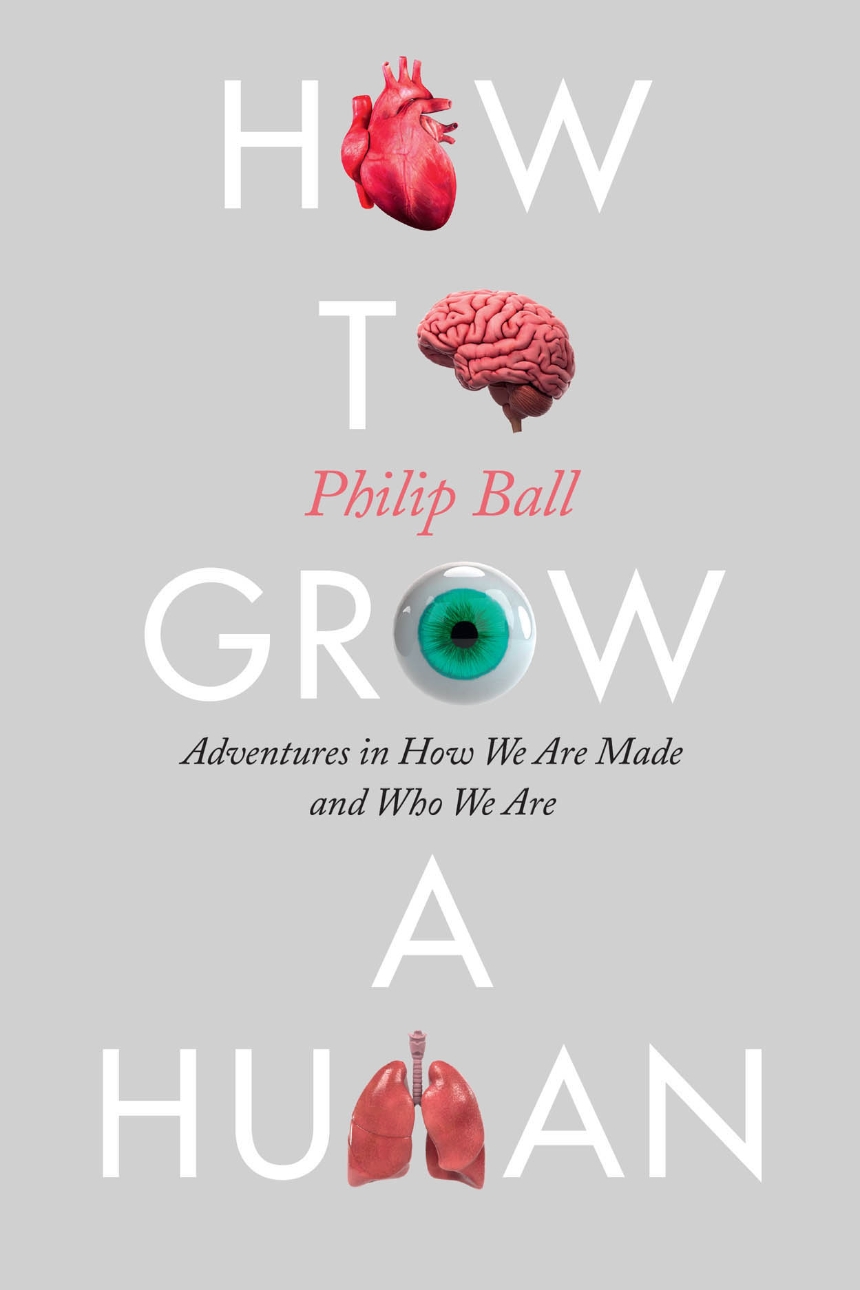How to Grow a Human
Adventures in How We Are Made and Who We Are
Two summers ago, scientists removed a tiny piece of flesh from Philip Ball’s arm and turned it into a rudimentary “mini-brain.” The skin cells, removed from his body, did not die but were instead transformed into nerve cells that independently arranged themselves into a dense network and communicated with each other, exchanging the raw signals of thought. This was life—but whose?
In his most mind-bending book yet, Ball makes that disconcerting question the focus of a tour through what scientists can now do in cell biology and tissue culture. He shows how these technologies could lead to tailor-made replacement organs for when ours fail, to new medical advances for repairing damage and assisting conception, and to new ways of “growing a human.” For example, it might prove possible to turn skin cells not into neurons but into eggs and sperm, or even to turn oneself into the constituent cells of embryos. Such methods would also create new options for gene editing, with all the attendant moral dilemmas. Ball argues that such advances can therefore never be about “just the science,” because they come already surrounded by a host of social narratives, preconceptions, and prejudices. But beyond even that, these developments raise questions about identity and self, birth and death, and force us to ask how mutable the human body really is—and what forms it might take in years to come.
In his most mind-bending book yet, Ball makes that disconcerting question the focus of a tour through what scientists can now do in cell biology and tissue culture. He shows how these technologies could lead to tailor-made replacement organs for when ours fail, to new medical advances for repairing damage and assisting conception, and to new ways of “growing a human.” For example, it might prove possible to turn skin cells not into neurons but into eggs and sperm, or even to turn oneself into the constituent cells of embryos. Such methods would also create new options for gene editing, with all the attendant moral dilemmas. Ball argues that such advances can therefore never be about “just the science,” because they come already surrounded by a host of social narratives, preconceptions, and prejudices. But beyond even that, these developments raise questions about identity and self, birth and death, and force us to ask how mutable the human body really is—and what forms it might take in years to come.
Reviews
Table of Contents
PROLOGUE
INTRODUCTION
My Brain in a Dish
CHAPTER 1
Pieces of Life: Cells past and present
CHAPTER 2
Body Building: Growing humans the old-fashioned way
FIRST INTERLUDE
The Human Superorganism: How cells became communities
CHAPTER 3
Immortal Flesh: How tissues were grown outside the body
SECOND INTERLUDE
Heroes and Villains: Cancer, immunity and our cellular ecosystem
CHAPTER 4
Twists of Fate: How to reprogramme a cell
CHAPTER 5
The Spare Parts Factory: Making tissues and organs from reprogrammed cells
CHAPTER 6
Flesh of My Flesh: Questioning the future of sex and reproduction
CHAPTER 7
Hideous Progeny? The futures of growing humans
THIRD INTERLUDE
Philosophy of the Lonely Mind: Can a brain exist in a dish?
CHAPTER 8
Return of the Meatware: Coming to terms with our fleshy selves
ACKNOWLEDGEMENTS
ENDNOTES
BIBLIOGRAPHY
PICTURE CREDITS
INDEX
INTRODUCTION
My Brain in a Dish
CHAPTER 1
Pieces of Life: Cells past and present
CHAPTER 2
Body Building: Growing humans the old-fashioned way
FIRST INTERLUDE
The Human Superorganism: How cells became communities
CHAPTER 3
Immortal Flesh: How tissues were grown outside the body
SECOND INTERLUDE
Heroes and Villains: Cancer, immunity and our cellular ecosystem
CHAPTER 4
Twists of Fate: How to reprogramme a cell
CHAPTER 5
The Spare Parts Factory: Making tissues and organs from reprogrammed cells
CHAPTER 6
Flesh of My Flesh: Questioning the future of sex and reproduction
CHAPTER 7
Hideous Progeny? The futures of growing humans
THIRD INTERLUDE
Philosophy of the Lonely Mind: Can a brain exist in a dish?
CHAPTER 8
Return of the Meatware: Coming to terms with our fleshy selves
ACKNOWLEDGEMENTS
ENDNOTES
BIBLIOGRAPHY
PICTURE CREDITS
INDEX
